To say reading is the most important skill you'll ever learn is not an overstatement—without it you can't drive a car, go to college, get most jobs, write more than your name, or cook using a recipe. Reading books and newspapers helps us improve as human beings, to expand not only our knowledge, but our understanding of, and interaction with, other people. Without the ability to read and interpret the written word, a man limits himself to life's most basic needs, most of which we share with the animals.
It is vital that your children learn to read well. Once they grasp the basic ways our language works, they canbegin to uncover all kinds of knowledge they would have no access to otherwise. There aren't really any student-guided phonics programs (if a child can't read, they won't be able to read the instructions teaching them how to read), though there are a variety of approaches to phonics instruction. One of the most common is the decoding method, in which students are taught to recognize letter-sound combinations, and then to put them together to make whole words. Another popular approach is simply to have kids learn and memorize the phonics rules (this has more potential to frustrate kids).
One of the main benefits of the decoding method is that it connects written language to the spoken language, with which students are already becoming familiar. A lot of the decoding-based programs use pictures to help kids connect sounds with words and concepts they know, and this helps critical thinking as well as reading automaticity (another name for fluency). We probably lean more toward decoding courses, but other approaches have their own strengths, and the decoding method isn't without its drawbacks.
Here is a quick summary of the phonics curricula we offer, in alphabetical order:
 |
A Beka Phonics Grades K-3
A Beka Phonics' decoding method is implemented through constant repetition and written work: fortunately, this is also a very visual course, with lots of flashcards, charts, colorful student texts, and other materials to help kids remember phonics rules and phonogram sounds. Like other A Beka programs, this one is supported by numerous supplements, including readers and teacher books.
|
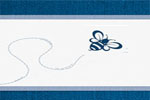 |
All About Reading Grades K-3
If it's flat-out fun you're looking for, All About Reading is basically the decoding approach, but built around a series of games for young children to play with parents and teachers. The idea is for kids to not realize they're learning while actually internalizing quite a lot of information. They do activities, read fun stories, and (if you want to buy the puppet) "teach" what they've learned to Ziggy Zebra.
|
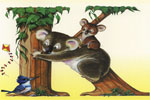 |
American Language Series Grades K-1
The American Language Series by Dr. Guyla Nelson is a comprehensive language artsprogram with particular concentration on phonics and early reading development. Teacher guides help you guide kids through readers and workbooks, with different workbooks focusing on various aspects of language arts. This is a reprint of a long-established classic.
|
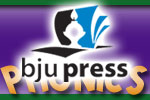 |
BJU Phonics Grades K-1
BJU Phonics integrates every imaginable subject for kindergartners in the context of phonics. Things change again at first and second grade to become more traditional. This is pretty straightforward phonics, with everything you need included in the teacher guides, and engaging texts for the kiddos, but it is extremely effective and comprehensive.
|
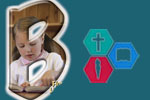 |
CLP Adventures in Phonics Grades K-3
For each level there's a consumable student book and a teacher guide, along with the typical phonics elements: flashcards, pronunciation CD, charts, and some reference books. Kids memorize rules and learn to identify sounds, in a two-pronged approach that is effective if somewhat austere. The emphasis is on instruction/learning, so frills are set aside.
|
 |
CLP Phonics & Reading Grades K-6
Adventures in Phonics is a sounds-based curriculum that is bare-bones, easy to use, and affordable; it's only downside for homeschool families is that it was originally designed for classroom use. The Nature Readers are both scientifically informative and character-building. Other CLP readers include Christian biographies, adaptations of classic stories, and collections of history essays.
|
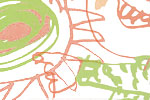 |
Explode the Code Grades K-4
This is the most basic decoding program we carry. Explode the Code has kids corresponding pictures with sounds and answering critical thinking questions (of the ridiculous and funny variety). A series of workbooks and teacher keys, this is easy to implement and fun for parents and kids, though it should be used as an introduction or reinforcement rather than a complete curriculum.
|
 |
Horizons Phonics & Reading Grades K-2
Horizons Phonics & Reading offers four workbooks and four readers for kindergarten students; first and second graders have two workbooks and two readers each. This is the spiral method applied to phonics, and means some concepts may disappear for a few lessons, but they'll always reappear when they're needed again. The teacher provide both answers to exercises, and teacher notes.
|
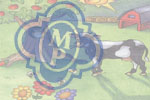 |
Memoria Press Phonics & Reading Grades K-1
Memoria Press Phonics & Reading is fast-paced and multisensory, presenting words out of context so that kids will have no option but to read them phonetically. Classical Phonics is for students and teachers, and introduces the alphabet and words. First Start Reading consists of four worktexts and two teacher's guides designed to get students reading as quickly and as well as possible.
|
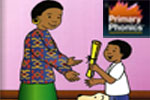 |
Primary Phonics Grades K-2
Since all their subsequent learning depends on their ability to read well, young students can't really get too much phonics instruction. The Primary Phonics workbooks provide simple reading-in-context exercises for beginning readers in a simple picture-based black and white format. These are supplements, not a curriculum, but they are excellent for kids who are struggling with phonics.
|
 |
Saxon Phonics Grades K-2
Implementing the same spiral method of its math programs, Saxon Phonics is a fairly standard and old-fashioned phonics course. The teacher guide contains all instructional information, while the students practice what they've learned with flashcards and workbooks. Kids begin by sounding out consonants, move to vowels, and eventually are able to decode whole words.
|
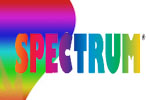 |
Spectrum Phonics & Word Study Grades K-6
Spectrum Phonics & Word Study is a great way to reinforce what your kids are learning elsewhere and to ensure they'll perform well on standardized tests, but these books won't teach phonics. Each book includes a series of 1-page exercises for students to complete which integrate both reading and writing elements in a full-color format that is easy to navigate.
|
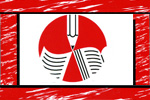 |
Spell to Write and Read Grades K-4
Spell to Write and Read is an ambitious comprehensive language arts program with less of a "fun" emphasis than many courses like it. Teachers will have their hands full juggling all the books, cards, and other media, but they'll also be rewarded with students able to handle themselves competently in both reading and writing, and who understand the complexity of language.
|
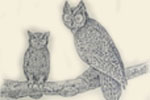 |
Teach America to Read and Spell Grades K-1
Teach America to Read and Spell is one of the best total language arts courses, covering phonics and reading, spelling, vocabulary, and handwriting in what the author calls a "direct phonics" approach. The material and presentation is fun, and the author makes himself available to users with questions. Students learn to decode the most recurrent phonograms at the outset.
|
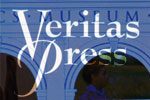 |
Veritas Press Phonics Museum Grades K-1
Another fun and multisensory (though not games-oriented) program, Veritas Press Phonics Museum uses fascinating and beautifully illustrated readers that also teach history and other subjects to get kids reading. The course also involves games and activities which demonstrate the interconnectedness of all the language arts, and help reinforce more traditionally presented information.
|
There are a number of supplements and teach-your-kid-to-read manuals not listed here; refer to our Phonics & Reading Resources section for reviews and product information. This is a frustrating and confusing subjct for many parents to teach, but if you get the right program for your family it'll soon become apparent that it's not as difficult (and probably more intuitive) than you thought or have experienced.
One thing you won't find (to reiterate): student-directed phonics programs. You'll need to interact with them every step of the way, and the more teacher involvement, the better. Don't look for a workbook you can hand 'em and abandon 'em because you won't find one. Nor should you: teaching your kids how to read provides a foundation for the rest of their education, as well as for your relationship with them as parent and instructor.
This isn't a subject you can afford to approach casually or half-heartedly. For kids to make it on their own in the world when they grow up, they need to read, and you're the one that can ensure they learn to read well. Not that practicality is the only consideration—reading is enjoyable, and kids who read a lot generally have more developed imaginations than those who don't. If they don't want to read when they're older, that's their choice, but chances are if you give them the tools they need when they're young they'll never want to stop.
Review by C. Hollis Crossman
C. Hollis Crossman used to be a child. Now he's a husband and father who loves church, good food, and weird stuff. He might be a mythical creature, but he's definitely not a centaur. Read more of his reviews
here.
Did you find this review helpful?